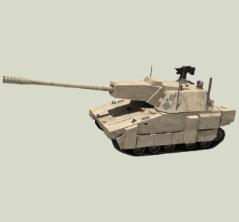WASHINGTON -- The Army's $200-billion Future Combat Systems -- the centerpiece of the service's "network-centric" modernization -- has been buffeted by cash shortages, insurmountable engineering obstacles and criticism that lighter, smarter, sensor-laden vehicles are not what the Army needs to fight tomorrow's wars. The program aims to equip 15 of the Army's roughly 70 combat brigades with new robots and hybrid diesel-electric manned vehicles connected by a secure radio network and equipped with high-tech sensors. After a difficult 2006 that saw four of FCS' robot designs axed due to budget constraints, this year the decade-old program achieved several milestones, wrapping the bulk of the basic research and development, and beginning the shift to production. Subcontractor BAE Systems has cut steel on the first Non-Line-of-Sight Cannon (NLOS-C), a tracked howitzer slated to replace the Army's 40-year-old M-109s. The two-man NLOS-C is the first of the planned eight manned ground vehicles, most weighing around 25 tons, that represent the most expensive facet of FCS. They might also prove to be the program's vulnerable flank.
Army Modernization Scheme Struggling for Relevance

